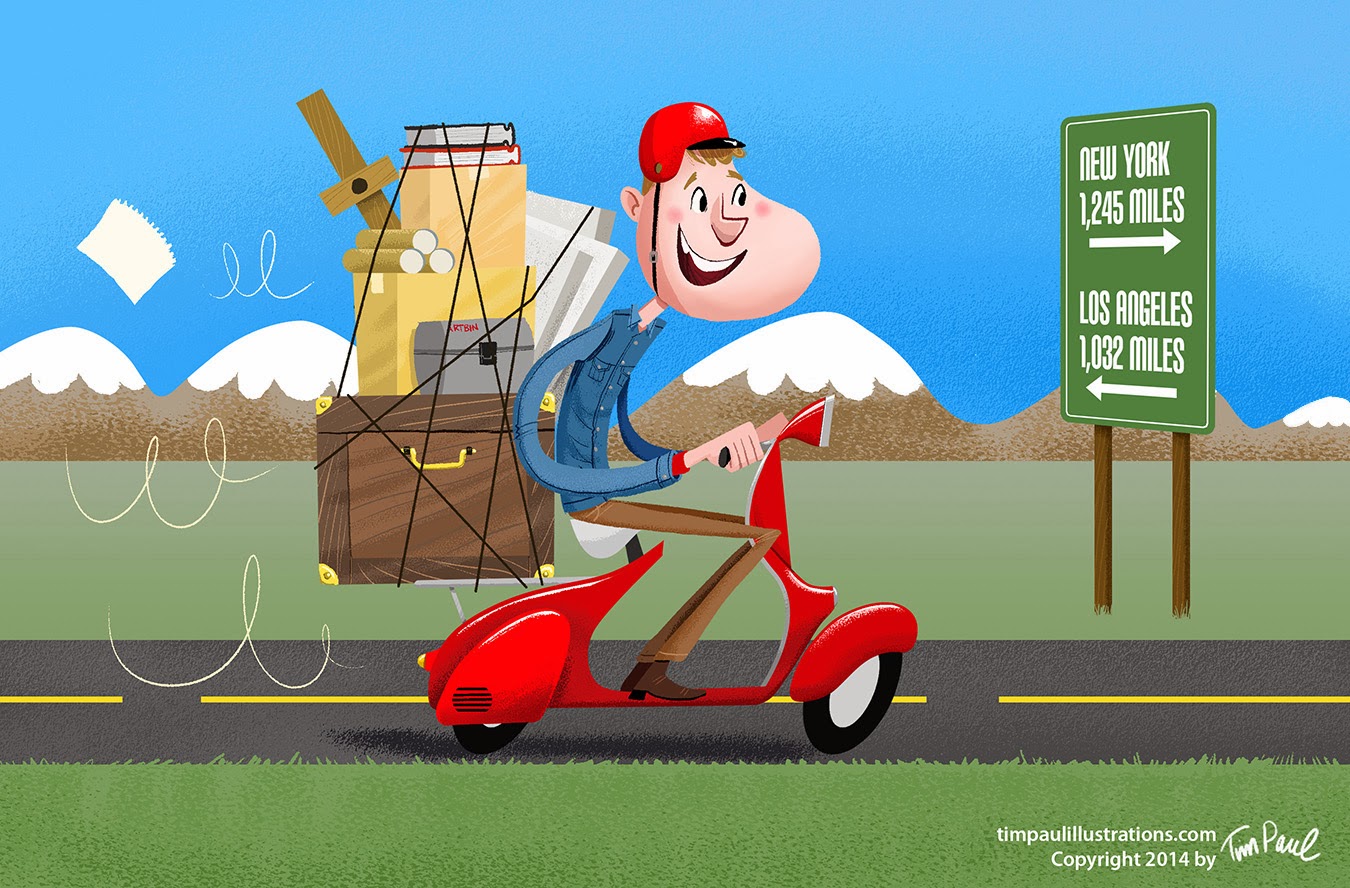Regular Muddy Colors readers may recall that, a few months ago, I did an illustration for a major property of a major brand (which I won’t be naming here, for reasons that will soon become apparent).
Since I work traditionally, one of the main perks of doing client work is the ability to sell the original drawings and paintings that are a byproduct of my process; the big brands tend to have enthusiastic collector bases, which means that a piece painted for, let’s say, a famous line of toys, will tend to sell for more than a painting of equal quality painted solely according to my own whims. It’s one of the reasons why, even though I can monetize my work independently through Kickstarter and Patreon, I’ll still take on the occasional client commission.
When I set out to auction this particular original, though, I encountered a hitch: several bids in, I was notified that the client claimed ownership not only on the image I’d created (expected) but also of the physical artwork (unexpected).
That can’t be right, I thought. I always read my contracts before signing them, and surrendering the original painting is definitely the sort of dealbreaker I’d have noticed.
I double checked the contract; to my client’s credit, it DID specify full ownership of my work. To my own credit, every other work-for-hire contract I’ve ever signed has ALSO specified full ownership of my work, and none of them have ever expressed the least interest in what happens to the original painting. To me (and to most of my clients to date) “the work” has signified digital pixels, copyrights, and legal authorship. To this particular client, it also happened to signify the piece of paper that I’d been accidentally setting my coffee cup on for the last eight months.
Much as I would have loved to take a doomed, Mr. Smith Goes to Washington-style stand against a perceived injustice, I decided to listen to the inner voice that said “You don’t have a legal leg to stand on here, but you DO have an awful lot of laundry to do today,” and cancelled the auction.
I’m telling this story not to solicit indignation on my behalf (I always keep a healthy supply of indignation on hand for just such an occasion) but rather to serve as the framework for three rather important reminders…
A reminder for artists
Invest in your own projects! There are a lot of reasons why the prospect of working for a big client is appealing, especially when you’re first starting out in illustration, but ALWAYS keep in mind that as long as you’re working on someone else’s project, you are building a house that you will never get to live in.
For all that I talk up the joys of personal work, the reality is that it can sometimes feel less rewarding than client work. The reaction you’ll get to posting “Hey guys, I’m starting my own project, something hitherto unimagined by mortal minds!” will probably feel downright disappointing compared to the torrent of hearts and emojis you’ll get when you post “Hey guys, I’m working on that property you guys already own all the DVDs of!” And, it’s a hell of a lot more work.
Compared to jumping right into work on an established property, building your own IP is a slower process; there are no blueprints, no foundation in place, and you will not get the corporate discount at the hardware store. But the thing about personal work is that it has the potential to BECOME that brand that people are so excited about, and when it does, YOU are the one who gets to profit off of your efforts. You’re building a house that you do get to live in — you can wear your shoes inside, change the locks, and put whatever political signs in the yard you want. If you get tired of the house, hell, you can sell it to fund your next construction project.
Before you say yes to working for someone else, think long and hard about what’s in it for you — what makes this project more important than investing that time into your personal work, your hobbies, your family — and oh yes, all that laundry that’s been piling up. Be very critical of any motivations that stem from ideas of the perceived status of a client, or your own feelings of fandom (if your knee-jerk reaction to the job offer is “Well heck, I’d pay THEM to work on this property!!” ...then examine that impulse carefully, and proceed with caution.)
And, of course, read your contract with an eye for the worst-case-scenario interpretation of its terms, and ask your questions up front!
A reminder to fans and collectors
YOU decide what’s worth collecting. Don’t forget that the artists whose art you love in Brand X or Game Y are almost always doing kickass work of their own and — good news — it’s probably on comparative fire sale on account of not having licensed cartoon characters plastered all over it.
Don’t be afraid to look beyond what’s been served up as relevant, collectible, or valuable by the big brands — you have the ability to decide for yourself what work has value.
*cough* wyliebeckert.com/paintings *cough*
A reminder to corporations.
Rethink your outdated policies. (Okay, they’re not listening, but it’s fun to pretend!)
The social media reach of a handful of modestly popular artists can easily eclipse that of even a large company. If those artists are given the potential to profit further from the work they’ve already done for you, they will move heaven and earth to put your product in front of their fans.
Small compromises, like allowing an artist to produce art prints or — lowest of low bars — retain ownership of a physical object they created, directly benefits your brand. A company like Wizards of the Coast, for example, is a good illustration of how, by loosening the corporate leash just a little bit, a company can leverage the collective power of its artists to create an absolute juggernaut of a brand.
Things tend to chug along on the path of “this is how we’ve always done it” regardless of the merits of the status quo. Quite often, artists don’t realize they have options for monetizing their art that DON’T involve the surrender of authorship, first born children, etc. Collectors don’t realize that their own choices are what shapes the market. Corporations don’t realize how shortsighted it is, in an age where “organic reach” is the proverbial brass ring, to cling to policies that disenfranchise the artists who bring their ideas to life.
But hey: now we know. And as a great American once said, “Knowing is half the battle.”








If I were an artist working in both digital and traditional media, this would heavily skew my balance towards digital.
I’m now curious if Wizards of the Coast contracts also include that clause, because so many of their artists auction their originals and it would be pretty major if they decided to enforce such a contract.
While these things tend to be worded pretty similarly across the board, I think WOTC realizes that the lure of original sales is one of the big draws for established artists who can command higher rates than MTG typically pays… which in turn levels up the quality of art for the game at no additional cost to WOTC. I’d be very surprised if they ever flipped their position on this (and I’d also probably not be a Magic artist, unfortunately.)
Ugh, I can’t believe they pulled that with this piece for you, but if it’s the piece I think it is, I’m also kind of not surprised, having combed over lots of contracts in that particular sphere myself, they’re pretty ruthless. A fantastic reminder though to double check WFH contracts and ask for specifics like ownership of original art though. I’m sorry that auction didn’t work out for you, Wylie, I know the original sales often also make up for what the working prices don’t.
Luckily, this project paid pretty well on its own – I’ve definitely done work-for-hire pieces where commission rates + not having the option to sell the original would have been a serious kick in the teeth!
So true! Great post- thanks Wylie!